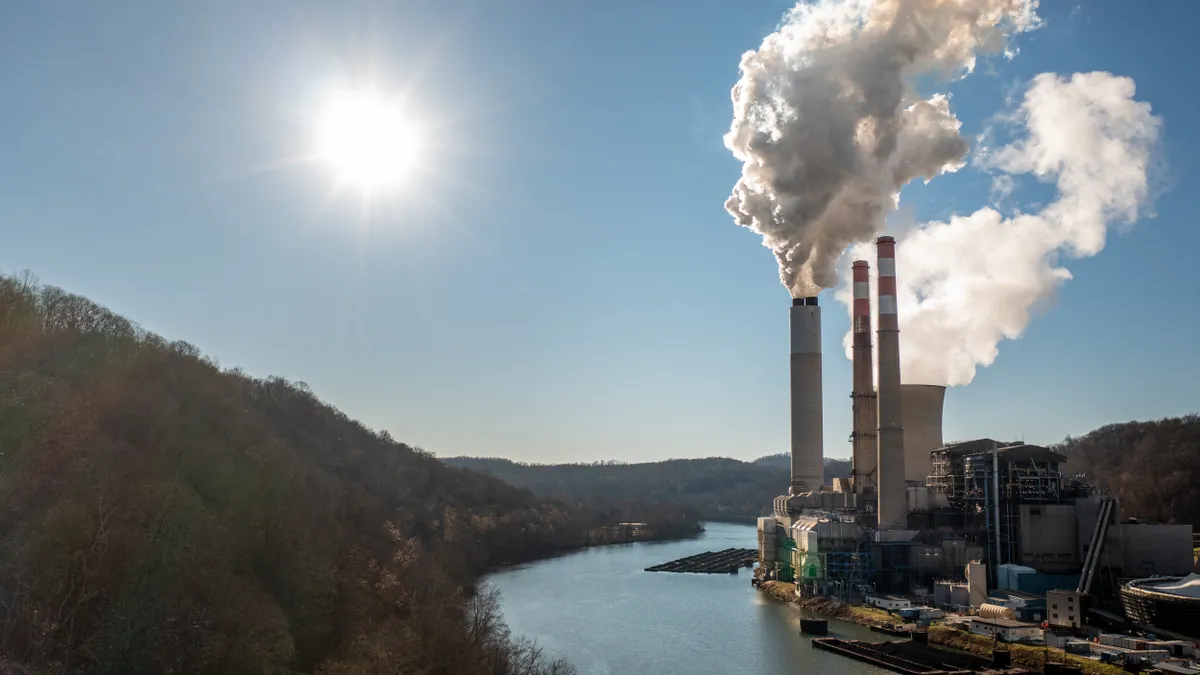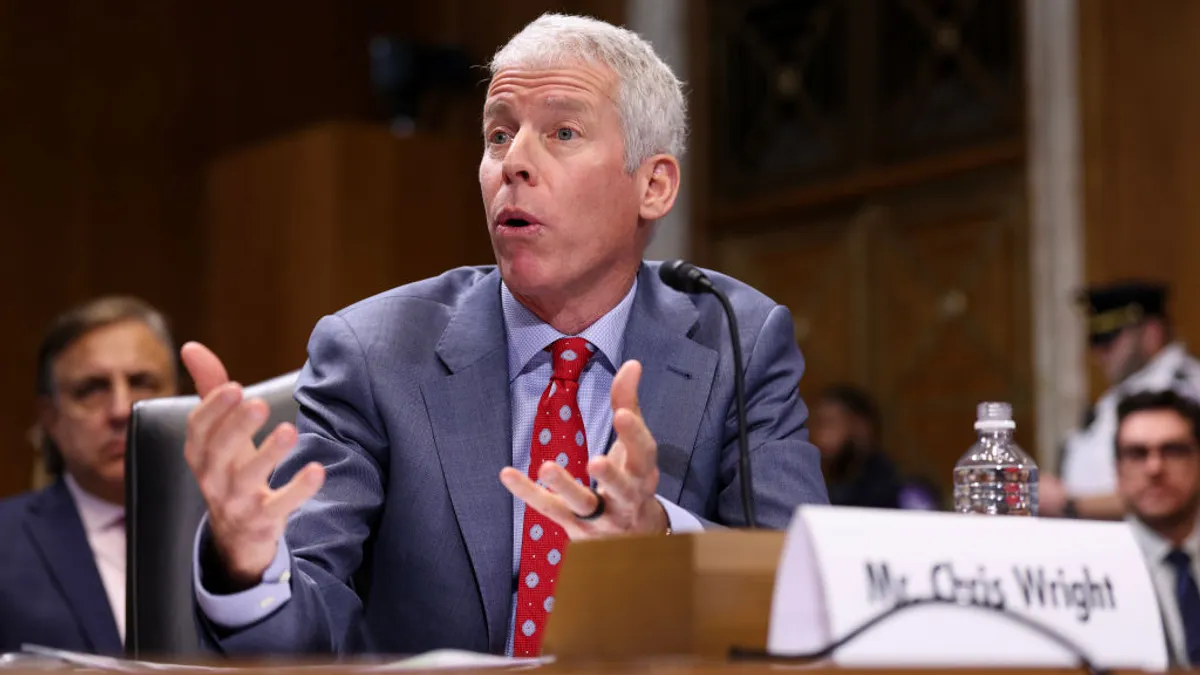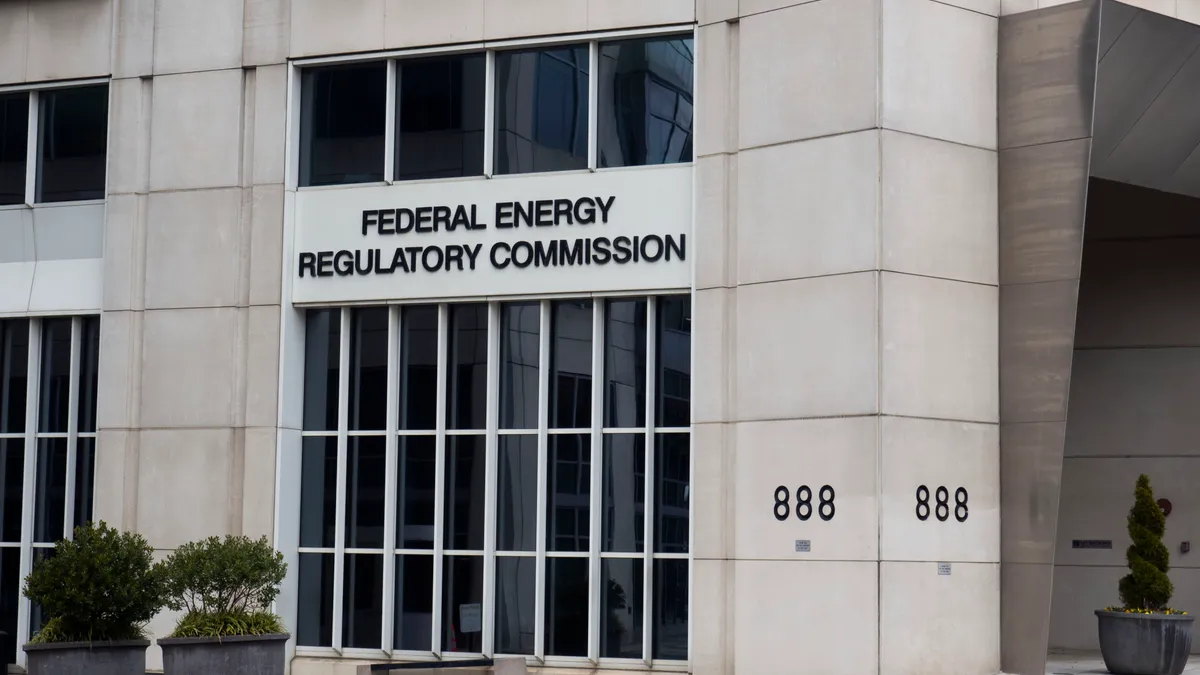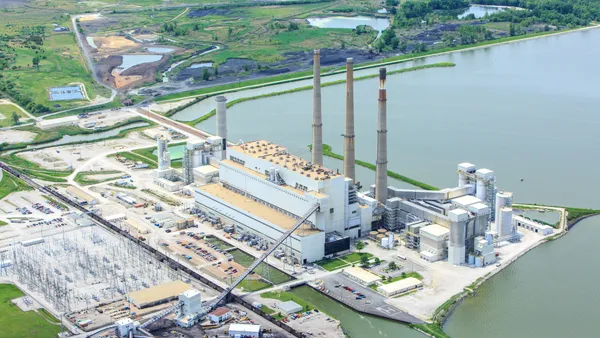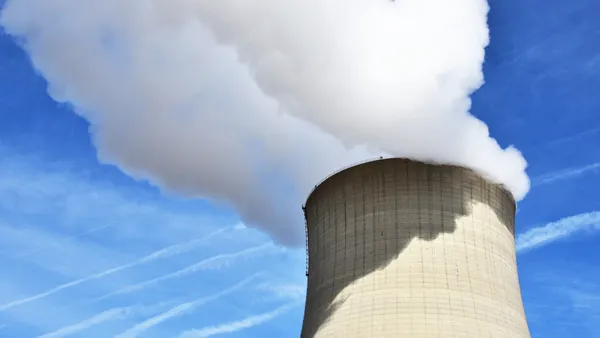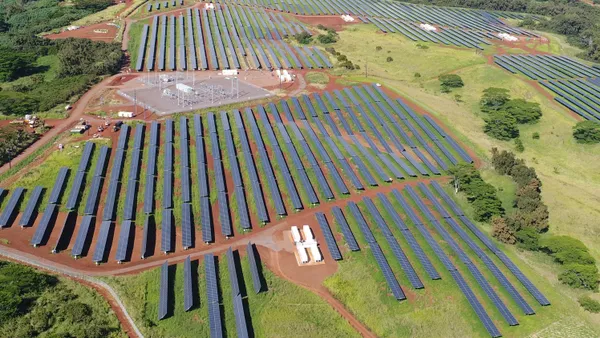Dive Brief:
- President Donald Trump signed four executive orders on Tuesday aimed at supporting coal mining and coal-fired power plants.
- One executive order directs U.S. Department of Energy Secretary Chris Wright to develop a process within 90 days for issuing emergency orders to keep power plants operating in areas of the country deemed to have potential grid reliability problems.
- The executive orders will likely have little effect on coal-fired generation or carbon markets given “constraints on the use of emergency authorities and the orders’ symbolic nature,” according to Capstone analysts. “While the order directs the [DOE] to focus on funding coal projects, we expect to see a limited pool of applicants.”
Dive Insight:
Coal-fired power plant capacity totaled 201 GW, or 15% of all U.S. capacity, at the start of this year, down from 305 GW, or 26% of U.S. capacity, at the end of 2015, according to the Federal Energy Regulatory Commission.
With power demand growing, partly driven by data center development, the Trump administration aims to reverse the decline in coal-fired generation.
Trump signed three other executive orders Tuesday. One order gives coal-fired power plants an extra two years to meet the Environmental Protection Agency’s Mercury and Air Toxics Standards, which was toughened by the Biden administration. The Trump administration aims to reverse the updated MATS rule.
Another executive order directs the U.S. attorney general to challenge state climate and energy-related laws and policies that are deemed unconstitutional, preempted by federal law or unenforceable.
Trump also aims to boost coal mining with another executive order, which also gives DOE, the Interior Department and Commerce Department 60 days to identify regions where coal-fired infrastructure is available to support AI data centers.
During an executive order signing ceremony, Trump said he was directing Wright to keep open the 380-MW, coal-fired Cholla power plant near Joseph City, Arizona. Arizona Public Service, which owns the power plant, planned to retire it this month.
“We're going to keep those coal miners on the job,” Trump said. “Can you tell them to just remain calm, because we're going to have that plant opening and burning the clean coal, beautiful clean coal, in a very short period of time.”
In another move, DOE on Tuesday said it was offering loan guarantees for coal-fired power plant projects, such as upgrading energy infrastructure to restart operations or operate more efficiently or at a higher output.
The moves by the Trump administration do little to improve the economics of coal compared to other generating resources, according to Rob Gramlich, CEO of Grid Strategies. “Natural gas fracking killed coal power in the US and neither this nor any previous administration is banning fracking,” Gramlich said on social media.
“I don’t think these orders change the facts that coal-fired power plants are old, expensive to run, and unlikely to operate very often or for many more years,” Gramlich said.
Also, there is no evidence that any company is considering building a new coal-fired power plant or that supply chains or manufacturing could support it, Gramlich said.
Nearly all U.S. coal-fired power plants are more expensive to run than new, local wind, solar and energy storage resources, according to a January 2023 report from Energy Innovation.
Capstone doubts any company will seek DOE loan guarantees for new coal-fired power projects. “We are skeptical the private sector will chase funding targeting coal assets beyond potential assistance for coal-to-gas switching,” said the research firm, noting that Energy Infrastructure Reinvestment program funds must be committed by Sept. 30, 2026, leaving little time for applicants to navigate the typical 18-month application process.
The directive ordering DOE to establish a process to keep power plants operating if reserve margins fall below certain thresholds could lead to a wide range of impacts, depending on how it is implemented, according to Devin Hartman, director of energy and environmental policy at the R Street Institute.
“At worst, it could be used as a really disruptive intervention that has marginal reliability value at best and really deters actually a lot of new resources from coming online by creating barriers to exit for existing resources,” Hartman said Wednesday.
PJM backs MATS exemptions
Meanwhile, the EPA is offering power plants two-year exemptions to the MATS rule, which could be requested via email with a deadline that ended on March 31.
The owners of at least ten coal-fired power plants in the PJM Interconnection totaling 13,900 MW were seeking exemptions from the EPA as of April 4, PJM said in a letter of support for the requests.
According to PJM, exemptions are being sought for Talen Energy’s Keystone and Conemaugh power plants in Pennsylvania; Buckeye Power’s Cardinal power plant and Vistra’s Miami Fort power plant in Ohio; East Kentucky Power Cooperative’s Cooper and Spurlock power plants in Kentucky; FirstEnergy’s Fort Martin and Harrison power plants, and Dominion Energy’s Mount Storm power plant in West Virginia; and Vistra’s Kincaid generating station in Illinois.
“To the extent the requested exemptions allow resources that would otherwise retire to extend their operation, PJM anticipates needing these units to maintain reliable grid operations during peak system conditions,” the grid operator said.
When the EPA updated its MATS rule a year ago, the agency said over 10 years starting in 2028 it would produce $300 million in health benefits and $130 million in climate benefits, and cost $860 million.



